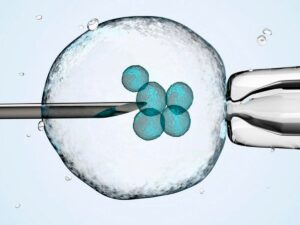Fertility testing is a crucial step for couples trying to conceive, offering insights into reproductive health and helping identify potential barriers to pregnancy. Both men and women undergo specific tests to assess their fertility status, and understanding these tests can guide the next steps toward successful conception.
For women, fertility evaluation often begins with hormone testing. Blood tests measure hormones such as FSH (follicle-stimulating hormone), LH (luteinizing hormone), and AMH (anti-Müllerian hormone), which are important indicators of ovarian reserve and overall reproductive health. Ultrasound scans, particularly transvaginal ultrasounds, are used to examine the uterus and ovaries, helping detect structural issues like fibroids or ovarian cysts. Hysterosalpingography (HSG) is another common test that checks for blockages in the fallopian tubes by using dye and X-ray imaging. Ovarian reserve testing, combining AMH levels and antral follicle count, is especially relevant for women over 35 to estimate their remaining egg supply.
For men, the cornerstone of fertility testing is semen analysis. This test provides detailed information about several key parameters: semen volume, sperm concentration (count), motility (movement), and morphology (shape). According to World Health Organization (WHO) standards, a healthy semen sample should have a volume of at least 1.5 mL, a sperm concentration of 15 million per mL or more, and a total sperm count of at least 39 million per ejaculate. Motility is crucial, with at least 42% of sperm moving and 30% showing progressive forward movement. Morphology should show at least 4% of sperm with normal shape, as abnormal forms can hinder fertilization. Other factors, such as pH (which should be between 7.2 and 8.0), liquefaction time, and the presence of white blood cells, are also evaluated. High white blood cell counts may indicate infection, while abnormal pH or liquefaction time can signal other reproductive issues.
Hormone testing in men, including measurements of testosterone, FSH, and LH, can reveal hormonal imbalances that affect sperm production. In certain cases, genetic testing is recommended, especially if there is a history of infertility or recurrent miscarriages, to detect chromosomal abnormalities. Scrotal ultrasound may also be used to identify structural issues like varicoceles, which are enlarged veins in the scrotum that can impact sperm quality.
Interpreting fertility test results can be complex. Normal results generally indicate no obvious barriers to conception, but if pregnancy does not occur, further evaluation of both partners is advised. Abnormal results do not necessarily mean conception is impossible; they may point to treatable issues such as infections, hormonal imbalances, or structural problems. In some cases, lifestyle changes, medical treatments, or assisted reproductive technologies may be recommended.
Ultimately, fertility testing provides a comprehensive overview of reproductive health for both men and women. Understanding the purpose and meaning of each test empowers couples to make informed decisions and seek appropriate support on their journey to parenthood. If you are considering fertility testing, consult with a specialist who can guide you through the process, interpret your results, and discuss the best options for your individual situation.











